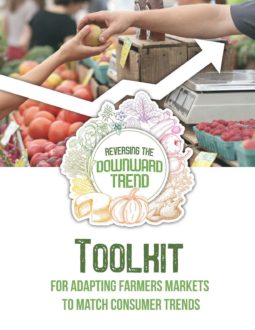Farmers across the Northeast have reported decreases in consumer participation at farmers' markets and reduced sales. This toolkit was developed as a result of survey research that looked at consumer perceptions of shopping at farmers' markets. The publication provides information on marketing strategies and services aimed to help farmers' market managers and farmers understand what consumers want in their shopping experience and ways they build out their markets and farm businesses to better respond to what consumers want.
The toolkit was created by a team of farmers' market specialists: Laura Biasillo, Cornell Cooperative Extension of Broome County; Diane Eggert, Farmers Market Federation of NY; and Lindsay Ott Wilcox, Centermost Marketing LLC; in cooperation with Erin Buckwalter, NOFA-VT; Amy Crone, Maryland Farmers' Market Association; Ginger S. Meyers, University of Maryland Extension; and Devon Whitley Deal, Community Involved in Sustaining Agriculture.
Table of Contents
- Introduction: Survey and Toolkit Overview
- Marketing
- Branding Basics
- Finding the Customer Base
- Marketing on a Budget
- Mastering Marketing Messages
- Reaching the Target Audience
- Programs and Services
- Farmer Training
- Building Market Programs for All Shoppers
- Bringing Convenience to the Farmers Market
- Children’s Programming
- Targeted Events for Farmers Markets
- Enhancing the Experience
- Market Integrity
- Market Layout and the 3 Ps
- Meeting Customer Needs
- Partnerships with Community Events
- Transportation
- Vendor Diversity
- From the Farmer’s Perspective: Special Section with Vendor Tools
- Addendum
- Farmer Evaluation Checklist
- Design 101 Guide
- Survey Report and Analysis
Want more information? See the related SARE grant:
- Reversing a Downward Trend in Customer Participation and Farmer Sales at Farmers' Markets (ENE18-150)
This material is based upon work that is supported by the National Institute of Food and Agriculture, U.S. Department of Agriculture through the Sustainable Agriculture Research and Education (SARE) program. Any opinions, findings, conclusions, or recommendations expressed in this publication are those of the author(s) and should not be construed to represent any official USDA or U.S. Government determination or policy.
